Activites
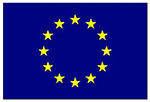 ec.europa.eu/esf |
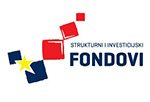 www.strukturnifondovi.hr |
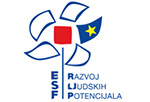 www.ljudskipotencijali.hr |
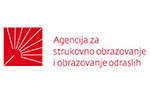 www.asoo.hr |
Projekt je financiran sredstvima Europske unije iz Europskog socijalnog fonda. Ulaganje u budućnost Integracija skupina u nepovoljnom položaju u redoviti obrazovni sustav 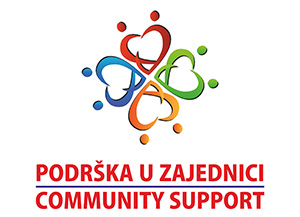 Projekt provodi Udruga "Srce" u partnerstvu: Centar za socijalnu skrb S.I.Zelina, DV Proljeće, DV Tintilinić, Osnovna škola Dragutina Domjanića, Osnovna škola Ksavera Šandora Đalskog, Osnovna škola Bedenica i Srednja škola Dragutina Stražimira. |
|||
The work of the Association is based on providing educational - rehabilitation support through organized workshops and individual approach, organization of quality spending leisure time together with family, the Association professional team, and according to interests of the users themselves.
Key groups of activities of the Association are:
|
Individual Rehabilitation
|
Assistance |
Half-day stay |
Other activities |
Support in employment |
|
1 Speech therapy 2 Physitherapy 3 OT 4 Sensory Integration
|
1 Assistant in kindergarten 2 Teaching Assistant 3 Assistance in learning 4 Personal Assistant |
1 Srce Club - organized leisure time - 4 hours per day for users over 18 years 2 Specialized transportation services |
1 Creative Workshops 2 Therapeutic swimming 3 Therapeutic riding 4 Education and Rehabilitation playgroups for preschool age 5 Symposium and individual talks by experts |
1 Employment of persons with reduced working capacity 2 Social entrepreneurship development through the establishment of social cooperatives |
1. Physiotherapy
Physiotherapy is a profession that provides services with the aim of developing, maintaining and restoring mobility and improving the quality of movement and functionality in performing everyday life. Physiotherapists work with all age groups and they deal with a variety of diagnoses: impaired joint mobility, muscle function, balance or coordination. It is also important, with the help of physiotherapy, to eliminate the pain that is caused by damage to the musculoskeletal system, and thus to improve person’s independence in order to function better.
Thanks to various donors, “RTL Helping Children” in particular, moving into a new house "Srčeko", we are given a larger space, as well as various tools and materials to work with. Therefore, it is easier to carry out physiotherapy assessment, intervention and evaluation.
In the Srce Association, physiotherapy is carried out daily, individually or in groups, and it includes all age groups. There are different goals, depending on the age group.
The most commonly performed physiotherapy with younger children is through play, facilitation of active normal movement, inhibition of abnormal movement patterns, the development of coarse and fine motor skills, stimulation of the proprioceptive system, development of balance reactions, equilibrium reactions (reactions that serve the maintenance and establishment of balance during all other activities), righting reactions and protective responses, and educating parents about the proper “Baby-handling”. Through this kind of intervention, clear objectives are to enable the child the best possible playing, as well as maintaining proper postural tone. In older children, the most commonly performed exercises are stretching exercises, exercises to improve the range, exercises to increase strength, balance exercises, proper facilitation of movement and inhibition of abnormal movements and compensation. Thus fine and coarse motor skills are developed and maintained, that prevents contractures and deformities, as well as a variety of adjustments that occur due to abnormal movement patterns. On account of the new premises and equipment, we can practice walking and proper posture maintenance.
In the group work, exercises for stretching the whole body are conducted, muscle strengthening, balance, coordination and balance. Through group physiotherapy, users raise awareness of taking care of their health and maintain a healthy lifestyle. Implementation of adequate physiotherapy process is much easier with the use of equipment such as mats, therapy table, elastic bands, rods, ball, pilates ball, balance-board, weights, exercise bike, kits for developing proprioception and fine motor skills. As a result, users are more satisfied, because there is an ability to exercise more intense, more autonomous, more imaginative and quality work.
Marina Sakmardi, Bacc. Physioth.
2. Occupational Therapy
Occupational therapy is for people whose ability to perform activities of daily living are impaired by development, injury or illness, aging, psychological, social, cultural, or a combination of the above.
Occupational therapy is carried out exclusively through functional, purposeful activity intended for an individual, i.e. through daily activity in the area of self-care, productivity and leisure time. It is important to allow the user to take part in those activities which he chooses himself, so that would have purpose and meaning for him. It is based on the therapeutic usage of activities during which the therapist uses a variety of therapeutic approaches, methods and techniques. Medium for implementation is diverse. If children are involved in the program, then the medium to achieve all the objectives (which are set in accordance with parents) is usually a play. For adults, the media can be a kitchen, where the activities are related to eating and cooking, bathroom (hand washing, oral hygiene, etc.), and the room where implemented activities are dressing, undressing, writing, etc.
A common medium for the implementation of occupational therapy in the Srce Association are creative workshops. They are carried out in groups, but each component of the activity is assigned to an individual with the intent and purpose of restoring and maintaining sensor-motor, cognitive and psychosocial components.
The main goal of occupational therapy is that the child / adult, regardless of the reason for the difficulties associated with their developmental differences or disabilities, achieves a greater degree of independence in performing daily activities.
Mara Juroš, Bacc. Therap. Occup.
3. Sensory integration therapy
Recently, an increasing number of parents, faced with the concept of sensory integration, wonder if there is something to do with their child. The answer to that question is that every human being is undergoing a process of sensory integration throughout their life, and it begins even before birth.
Sensory integration is normal neurological process. Each person on a daily basis receives some sensation, for example: tactile, auditory, or simply feel the people around them, etc. The ability to edit these sensory impressions, in order to create a relationship with their environment, is sensory integration.
The brain constantly receives sensory information (sensory impressions), and then it selects them and alternates, increases or decreases their reception and so adjusts them to the conditions in which we find ourselves. When there is imbalance in receiving and processing these sensory effects related to the area of the vestibular, tactile, visual or auditory system, we are talking about sensory integration disorder.
In the process of sensory integration, not five basic types of sensation are considered (scent, hearing, taste, sight, touch), but sensory systems:
- vestibular system - that gives us a sense of our body in space while moving through it
- proprioceptive - so called deep sensation that gives us information about the location of parts of the body where the sensation is
- the tactile system - surface contact
- visual system - vision, visual processing
- auditory system - perception, sound experience
Causes of sensory integration disorder may be different, either in gestation or chronological age. One of the causes of sensory integration disorders can be a mother's stress during pregnancy, or if the child was born by Caesarean section, or there was hypoxia or other types of trauma, mental or organic; and other reasons.
The most common behaviors that indicate a sensory integration disorder in children are:
- enhanced sensitivity to bright lights, sounds, movements
- inconsolable crying where standard techniques of reassurance do not help
- walking on their toes, overly bothered by labels on t-shirts, clothing, or sand
- reduced sensitivity: a child needs a touch, no sense of pain when struck, has a high tolerance for pain, throws himself to the people, the walls
- problems with movement coordination: awkward when they climb, constant falling while running...
- falling behind in speech, problems with writing when they start going to school
- problem with self-regulation and attention
If parents suspect or finds symptoms listed with their child's, they may seek the opinion from a sensory integration therapist. He will make an assessment and determine whether it is really sensory integration disorder.
Sensory integration is carried out in a separate sensory room. It is an imitation of children's playground, but completely safe, which is enriched with additional equipment for a child to be adequately stimulated.
The Srce Association has provided all the necessary equipment for carrying out sensory integration, and therefore also in this area it recognized and met the needs of its customers.
Marom Juroš, Bacc. Therap. Occup. – trained to conduct sensory integration therapy
4. Speech therapy
At the Association, Speech cabinet is formally active since March 2010, when the Prof. Božica Malekinušić worked with a few children part-time, but because of the great interest and needs of the community, since September 2010, it is based on the full-time employment and since then until today, the Cabinet works continuously and every month it records at least 2 to 3 new reports from parents looking for speech therapy.
After Prof. Malekinušić had retired, who laid the foundation of the Cabinet, I took over the role of the Cabinet manager in March 2011, after several years of experience as a school speech therapist. I have embarked on this professional and personal adventure that continues to this day. Working conditions for speech therapist were not promising in 2011, that anyone who came to exercise in our old space in the Square A.Starčevića could confirm. The space was a multi-purpose - office, physiotherapy, speech therapy and language exercises, help in learning... Equipped with only a small table and 4 chairs, a small wardrobe, a lot of material, enthusiasm and creativity, we were all eagerly awaiting to relocate to new premises in our Support House Srčeko, what we managed to do in September 2012. Since then, a new page has been turned in order to complete the work of the Srce Association and the work of the Speech cabinet as well.
Nowadays, our modern cabinet is equipped with all the necessary diagnostic, technical and didactic materials and aids. We are very proud of all that we have been able to provide for our little customers, and amazed and surprised facial expressions of all who visit Support House Srčeko testify the value and quality of what we offer. We possess these diagnostic instruments:
1. Reynell Developmental Scales for evaluation of speech understanding and speech production in children aged 1-7 years
2. Peabody Picture Vocabulary Test to check receptive language skills applicable in children aged 2.5 and older
3. KORALJE (acronym) - Communication Developmental Scale for the assessment of early language development from the first gesture to the grammar development, for children 8-30 months old, but for older age as well, in case of delays in speech and language development
4. Test to assess reading and writing preskills – “PredČIP” for assessing readiness for language learning initial skills for schoolchildren
Also, we own digital speech therapy kit that handles audio signal using digital signal processing. It is mostly used in the correction of speech production and auditory processing disorders that can occur with language difficulties, difficulties in reading, writing and learning, and often with ADHD, as well as in the stuttering treatment. All of the above materials and supplies, as well as a complete set cabinet, were funded by the 'Humanitarian Association RTL Helping Children.'
Within the European project, we recently obtained Vibrofon, a special device primarily intended for the correction of pronunciation phonems, mostly sound r, where with the help of an electric motor that drives the probe pressed against the child's tongue provokes vibrations necessary for the proper pronunciation of sound - r.
The correction of pronunciation and general oral-motor skills, we use supplies from the Talk Tools program, which was financed by own resources. That is the leading global program to improve the skills of feeding, swallowing and chewing as a prerequisite for proper pronunciation. We are proud that in September 2013 two of our customers received an opportunity to evaluate their oral-motor skills and creating a 6-month therapy program by one of the authors of Talk Tools program, Prof. Renee Roy Hill from USA. The two children were among 13 children from across the Croatia, that were assessed by the mentioned expert as part of the presentation at the Third Croatian Symposium on early intervention in childhood.
We use different didactic materials in the form of exercise books, picture books and books, multimedia educational games for computers, we teach parents to use educational applications on tablets. We encourage children who do not speak to communicate through the exchange of frames (PECS) or by using sign language for babies (BabySigns). We work with school and kindergarten staff and assistants in order to share information about child's progress, to give advice and support in their work, all with the aim of better integration of our children with disabilities in their home environment.
Monthly, 35 children are included on average in continuous speech therapy work (with both of the speech therapists) once or twice a week for 30 or 45 minutes. The exercises are aimed at eliminating or mitigating existing problems, or to correct pronunciation of the sounds, encouraging the development of speech-language skills, attention and concentration, and the development of prereading, reading and communication skills. We are also working on improving oral-motor skills and chewing and swallowing skills. Working with children of younger age, with the overcoming difficulties in the field of communication, is focused on building relationships, developing joint attention, participation in joint activities and similar activites. A lot of children in the past year, except for speech therapy, were included in other activities of the Association as well as working therapy and physiotherapy, sensory integration therapy and workshops for little ones and almost every day we work with other colleagues in the joint creation of the therapeutic procedures plan in order to mutually achieve the best and quickest success.
Renata Smrečki, Prof. speech therapist
5. Therapeutic swimming
Swimming is an integral part of being in the water. Swimming actually belongs to the natural form of movement and is a very effective tool for strengthening the body and targeting the proper physical development. In a therapeutic sense, it is essentially the practical application of hydrotherapy, that is based on the use of the water properties in order to perform facilitated - supported movements, using principles of hydrostatics and hydrodynamics.
The Srce Association provided therapeutic recreational swimming to its customers, using the Halliwick method and under the guidance of a swimming instructor and great help from volunteers, assistants and parents. Therapeutic swimming is implemented in Varazdin Spa.
In Halliwick program, 10 users are included with different levels and degrees of difficulties. In persons with development disabilities and persons with disabilities, the key is a patience and systematic work, and the results come only after a long period of time. In the last six months, our work results are very positive. We achieved that users, who were afraid of water, now enjoy it and find pleasure and relaxation in it. Most of them improved their communication skills and movement co-ordination, but the most important thing is that they arrive at the pool happy and with a smile.
Damir Galić, swimming instructor using Halliwick method


















